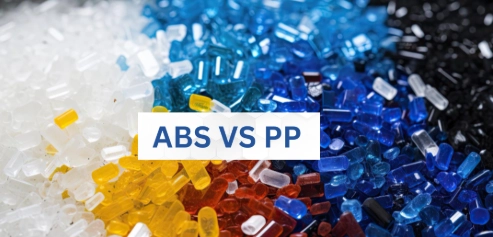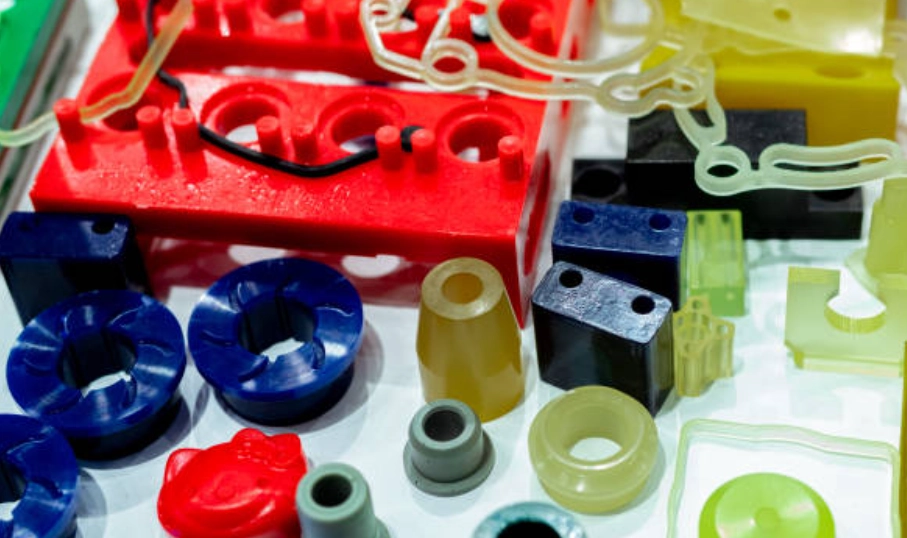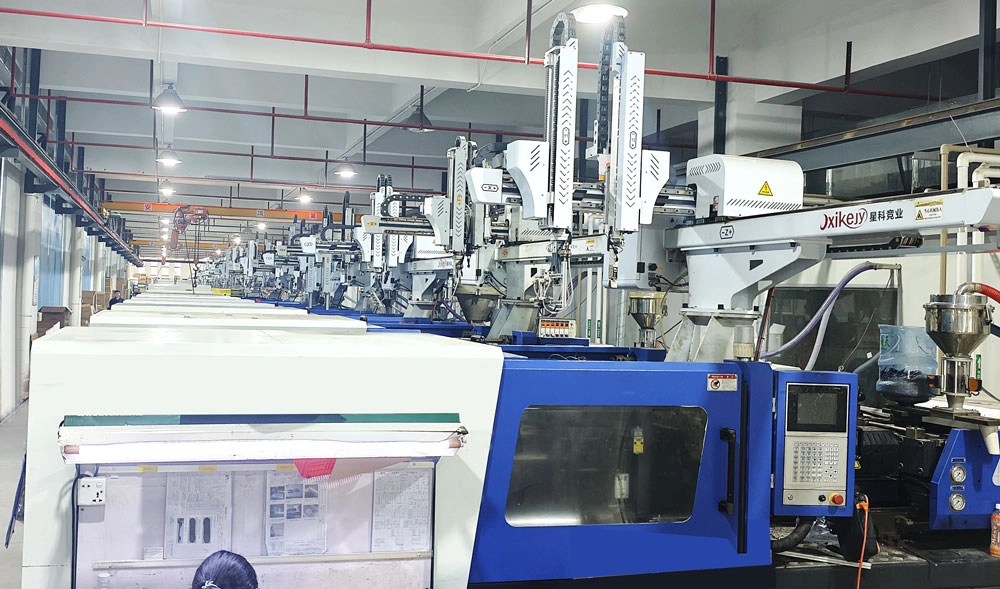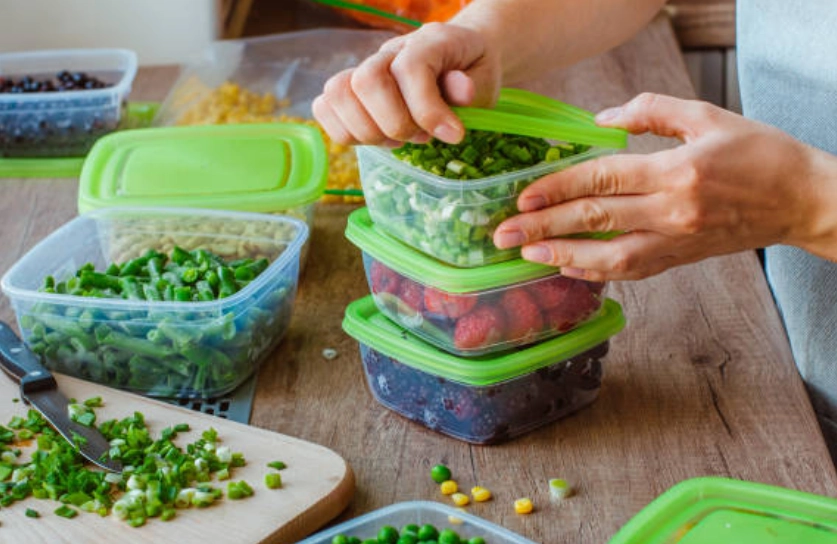
Getting to Know ABS and Polypropylene (PP)
What Makes ABS Special
ABS, or Acrylonitrile Butadiene Styrene, is a plastic made from three parts: acrylonitrile, butadiene, and styrene. It’s super strong, stiff, and can take a hit without breaking. ABS can handle okay heat without bending, melting at about 105°C (221°F). It fights off rust well and is easy to shape with tools like cutters or sanders. This stuff keeps things sturdy because it stays the same size and is light, perfect for injection molding.

What Makes Polypropylene (PP) Cool
Polypropylene, or PP, is a plastic made from propylene gas in a careful process. It’s awesome for resisting chemicals, bending without breaking, and being super light. PP can take high heat, so it’s great for outside stuff or rough weather. Plus, it’s got a slick surface and is safe for food. This plastic is bendy enough to mold into all kinds of shapes during injection molding.
How They’re Used in Injection Molding
Why ABS Rocks for Injection Molding
Perks of ABS in Injection Molding
ABS’s big strength and toughness make it a top pick for injection molding when you need something that lasts. It’s easy to work with, letting factories make tricky shapes just right. You can mix ABS with other stuff to make it even stiffer or handle more heat. This flexibility makes it a favorite for tons of businesses.
Stuff Made with ABS in Injection Molding
ABS is huge in car-making for things like dashboards, seat backs, and door panels. It’s also used in gadgets for things like keyboard keys and protective covers. In hospitals, ABS makes syringes and trays because it’s safe for medical use.
Why Polypropylene Shines in Injection Molding
Perks of PP in Injection Molding
Polypropylene has lots of wins for injection molding. It’s cheap and can be recycled. Its high melting point keeps it steady when molded in hot machines. PP’s bendiness lets it form fancy designs without losing strength. Its water-proof nature opens up even more uses.
Stuff Made with PP in Injection Molding
PP is used for food-safe stuff like jar lids and bottle caps. It also makes home items like furniture parts and tote bags. In ads, PP sheets are used for signs because they’re tough.
How ABS and PP Stack Up in Injection Molding
Strength and Toughness
ABS beats PP when it comes to muscle and taking hits. It’s great for things that need to stay strong under pressure, like heavy-duty parts. PP, though, is more bendy and can handle being flexed over and over. It’s not as stiff as ABS, but it’s great for stuff that needs to give a little.
Heat and Temperature Smarts
Both plastics handle heat okay, but PP’s melting point is higher than ABS’s. This makes PP better for things that get really hot. ABS stays solid in normal heat without warping, though, so it’s still good for many jobs.
Chemical and Weather Resistance
PP is a champ at fighting off chemicals like solvents and acids. It doesn’t soak up water, so it’s awesome for wet or outdoor spots. ABS is better at handling sun rays without fading, but it’s not as tough against chemicals as PP.

At Silkbridge, we’re pros at making top-notch stuff that fits your needs. Our fancy factories have cool machines that nail precision in injection molding. We churn out over 30 million plastic parts every year with machines from 180 tons to 1200 tons. We serve cars, medical tools, and gadgets with awesome quality.
Cost and Speed in Picking Materials
Cost Check: ABS vs. Polypropylene
When looking at costs for ABS and PP, you gotta think about both the upfront price and long-term value. PP costs about $1,283 to $1,350 per ton, making it cheaper than ABS. ABS runs between $1.50 and $2.34 per pound, so it’s pricier. These price gaps matter a lot when making tons of stuff, as costs add up fast.
But price isn’t everything. What the product needs matters too. If you need super strong, stiff parts, ABS’s higher cost might be worth it for its toughness. If bendiness and chemical resistance are key, PP’s lower price gives great bang for your buck without skimping on quality.
How Fast They Work in Injection Molding
How easy ABS and PP are to mold in injection molding is a big deal for picking them. ABS is a breeze to shape into tricky designs with spot-on accuracy. Its low melting point (around 105°C) means it doesn’t need tons of energy to mold, saving power.
PP molds great too but needs more heat than ABS. This makes it good for stuff that faces high temps during or after making. PP’s bendiness lets it handle complex shapes without breaking, keeping things strong.
At Silkbridge, our high-tech injection molding setups have over 100 machines from 180 tons to 1200 tons. We make over 30 million parts a year. We can tackle big projects or special jobs with super precision.
Green Thinking for ABS and Polypropylene
Can You Recycle ABS and Is It Green?
ABS can be recycled, which is great for helping the planet. Its long life and recyclability make it a smart pick for companies cutting down on trash. But recycling ABS is trickier than simpler plastics like PP because it’s made of multiple parts. ABS also holds up better against sun damage than PP, so it’s good for outdoor stuff even if it’s a bit harder to recycle.
Can You Recycle PP and Is It Green?
PP is a star at recycling because its structure is simple. It’s known for being recyclable, which fits big goals to cut plastic waste. Its water-proof nature makes it last outside without harming the Earth much. But PP can get damaged by sun rays over time unless you add special protectors. This might shorten its life in some jobs, but it’s still a super green choice.
Things to Think About When Choosing ABS or PP
What the Job Needs
Picking between ABS and PP depends a lot on what the product’s gotta do. ABS is stronger and tougher against hits. It’s perfect for stuff that needs to stay solid under stress, like car parts or gadget covers. PP’s bendiness makes it great for things that get flexed a lot, like food containers, tote bags, or signs.

Looks and Function
Looks matter too when picking plastics. ABS keeps things sturdy with its stiffness and steady size while staying light. You can mix it with other stuff to get cool looks or special features. PP’s slick surface feels neat for things like bottle caps or furniture bits. But painting PP is hard because paint doesn’t stick well. This might limit it for fancy-looking stuff, but it’s still awesome for practical uses.
At Silkbridge, we offer full help from designing products to injection molding, putting together electronics, and shipping. Our team makes sure every project hits top quality. Whether you need tough car parts or green consumer stuff, our skills mix new ideas with great making.
Extra Notes on Choosing Plastics
Choosing between ABS and PP isn’t just about one thing. It’s about matching the plastic to the job’s needs, like strength, heat, or weather resistance. ABS shines when you need tough, stiff parts that look good and last. PP wins for bendy, chemical-proof stuff that’s cheap and green. Both work awesome in injection molding, letting makers create all kinds of shapes with precision.
Costs play a big role too. PP’s lower price is great for big projects, but ABS’s extra strength might be worth the cost for heavy-duty jobs. Recycling matters more these days, and both plastics can be reused, though PP’s simpler makeup makes it easier. Thinking about sun damage or water exposure helps narrow it down too.
Silkbridge’s high-tech machines and know-how make sure injection molding with ABS or PP turns out great. We help pick the right plastic and get the job done right, whether for cars, medical tools, or home gadgets. By knowing what each plastic can do, makers can pick the best one for their project and nail their goals.
- WhatsApp: +86 18122838771
- Phone: +86 18122838771
- Email:contact@silkbridgeltd.com


